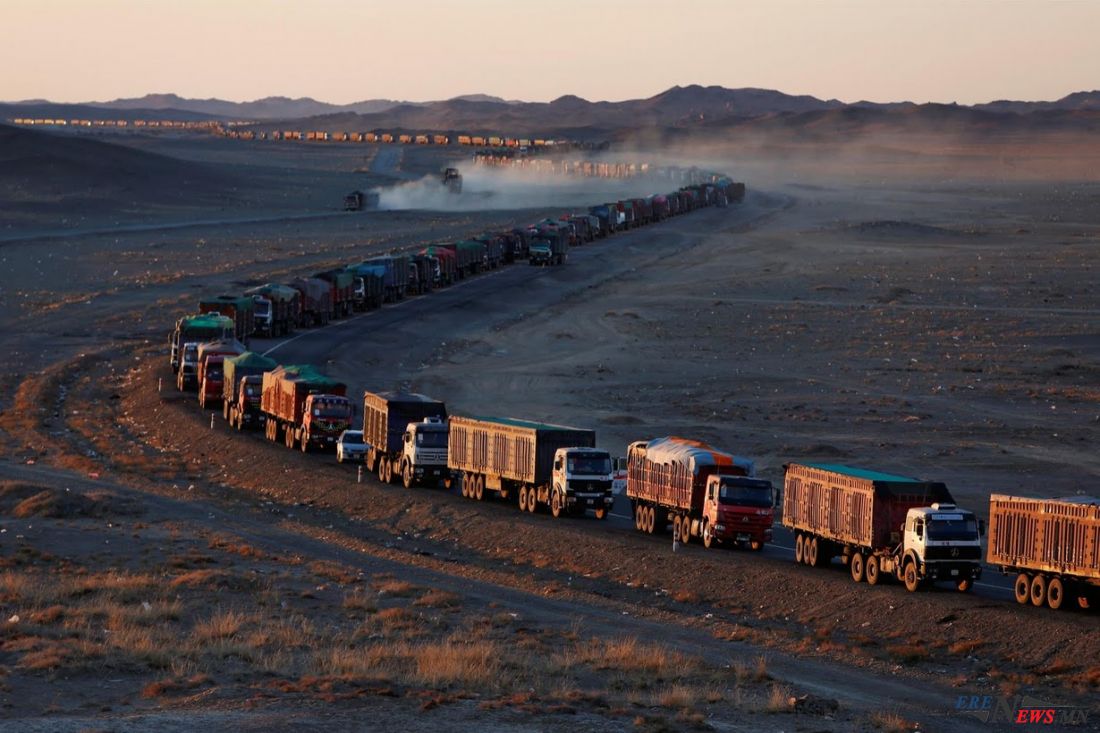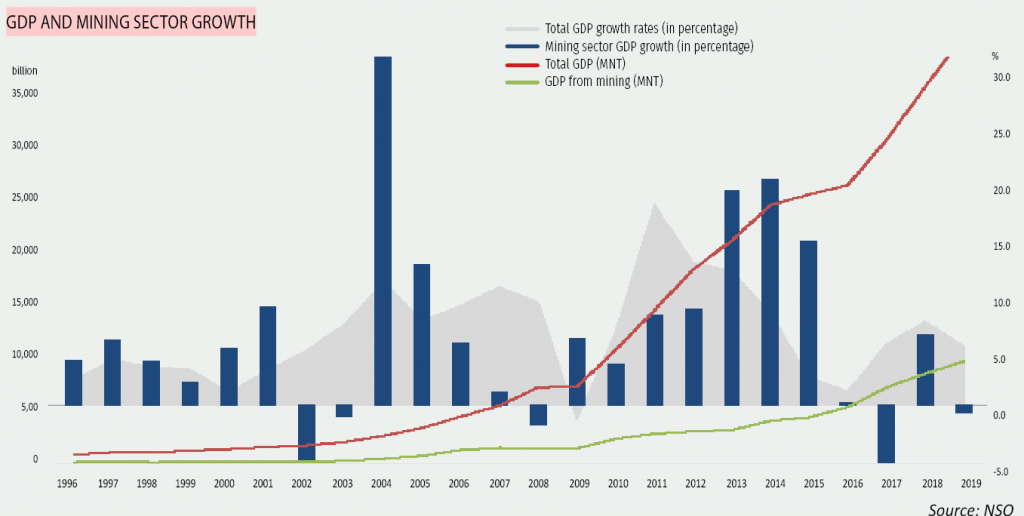Stormy 30 years

Mining is the only sector that has been carrying the country’s economy for 30 years. In the 1990s there was no choice but to turn mining into the locomotive of the economy. At the time when the government had no money for the acquisition of basic goods, not to mention salaries and pensions, the first President of Mongolia P.Ochirbat initiated the “Gold” program. “Back then, the central bank had no foreign exchange reserves or even money to buy gas. The gold industry shouldered the heavy burden of that time until the central bank received assistance from the World Bank, IMF and other donors” recalled D.Jargalsaikhan, former director of the Mineral Resources and Petroleum Authority of Mongolia.
In November 1991 the Government approved Resolution No.304, which allowed private investment in placer gold mining, which marked the beginning of the liberalization of the mining sector. Further, the establishment of Tulsh-Erchim Bank, which provided soft loans to the companies, and the passage of Minerals Law in 1994 greatly contributed to the implementation of the “Gold” program. Before the program, 500 kg of placer gold was mined annually, compared to 775 kg in 1992, 8.7 tons in 1997 and 11.4 tons in 2000. Accordingly, the Mongolians who had just dispensed with rationing mined 53.4 tons of gold under the “Gold” program, accumulating foreign exchange reserves and laying the foundation for the transition to a market economy. The “Gold” program intensified the geological exploration and attracted domestic and foreign investors, which made a significant quality change in the mining industry, concluded Mr. D.Jargalsaikhan.

The Minerals Law of Mongolia was first adopted to successfully implement the liberal policy based on gold with a focus on opening doors for foreign investors. Unfortunately, the law did not work. Whether it was because Mongolia was not known at all, or those who knew considered the country’s geographical location to be a drawback, or because of the recession in the global commodity market, the law somehow received a bad review from investors. Therefore, the law was re-approved in collaboration with World Bank experts in 1997. This time, the only criteria for investors were time. As a result, by the time the law entered into force on July 1, 1997, investors with their applications were lining up in a queue in the doorway of the former Mineral Resources and Petroleum Authority, recalled D.Jargalsaikhan.
Oyu Tolgoi, one of the world’s largest new copper-gold mines, was discovered thanks to this law. The discovery of Oyu Tolgoi deposits introduced Mongolia to the investors, said B.Chinzorig, President of the Mongolian Mineral Processing Association. Since then, more than 200 amendments have been made to the Minerals Law through a total of 34 discussions.
When commodity prices rise at the global market, Mongolia starts spending the money earned on coal and copper without a stint and faces the consequences when the prices fall. At such times, gold saves the day and recovers the weakened economy. Even at this time, when the prices of two major export minerals are low due to the outbreak of COVID-19, gold prices are plunging.
The mining industry has been carrying Mongolia’s economy over the last 30 years and will play an important role in the next 30 years as well.